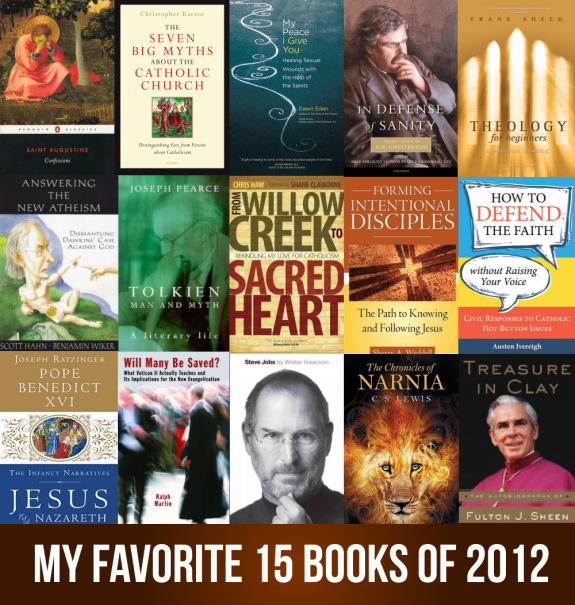NOTE: Check out books #15-#11 and #10-#6. You might also enjoy my favorite books from 2011 and 2010.
“The habit of reading is the only enjoyment in which there is no alloy; it lasts when all other pleasures fade.” — Anthony Trollope
This was a relatively slow reading year for me. After knocking out 87 books last year and 108 two years ago, I only finished 54 titles this year. Granted, 2012 brought many wonderful diversions: our third child, Augustine, was born; I studied hundreds of hours for the Professional Engineering exam (which I passed!); I had several new writing and speaking commitments; and I worked on two large book projects. Considering all that activity I’m actually surprised I read as much as I did.
Yet 54 books still provide plenty of options for my annual favorites list. As with prior lists, these are my fifteen favorite books, not the most acclaimed, the most timeless, or the best-written. They’re simply the ones I liked the most, the ones I kept thinking about well after finishing.
Only about half of these books were published in 2012. But as C.S. Lewis says, novelty isn’t always good; newer books haven’t passed the test of time. Regardless, some of these older books may be unfamiliar to you and therefore “new” in the best sense of the word.
Also, this year I’m splitting the list up into three parts. The whole thing came ended up being 4,300 words which is way too long for a single post.
So with that, here are my top five favorite titles from 2012 (in descending order):
5. Jesus of Nazareth: The Infancy Narratives
Pope Benedict XVI
(Image, 2012)
 The Popes’s third volume on the life and teachings of Jesus is just as rich as his first two. Yet at 144 pages, it’s much shorter than the previous volumes, each of which were over 300 pages. It’s also more speculative since details about Jesus’ birth, infancy, and “hidden life” are scant.
The Popes’s third volume on the life and teachings of Jesus is just as rich as his first two. Yet at 144 pages, it’s much shorter than the previous volumes, each of which were over 300 pages. It’s also more speculative since details about Jesus’ birth, infancy, and “hidden life” are scant.
But even with little source material and few pages to work with, the Pope delivers a substantive and moving commentary on Jesus’ early life. I particularly enjoyed his reflections on the genealogies of Christ. It’s tempting to pass over these long lists, thinking they have little spiritual significance, but the Pope shows how they reveal much about Jesus and ourselves. They link Jesus’ humanity to his divinity and highlight our own participation in God’s family.
The Pope also shines when commenting on St. Joseph, the Nativity, the Magi, and the complex cultural situation surrounding Jesus’ birth. I’d turn to Raymond Brown’s classic Birth of the Messiah for a more scholarly account, but the Pope’s small book is a perfect devotional read for Advent or Christmas. Smart and poetic from beginning to end, it’s one of the Pope’s best.
4. Will Many Be Saved?: What Vatican II Actually Teaches and Its Implications for the New Evangelization
Ralph Martin
(Eerdmans, 2012)
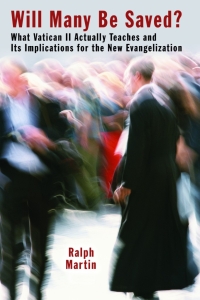 Even before the back-and-forth between Fr. Robert Barron and Dr. Ralph Martin concerning Martin’s recent book, I acclaimed Will Many Be Saved? as a significant contribution to New Evangelization scholarship. While it’s become a buzz-phrase within the Church, the New Evangelization has yet to really take off. Martin argues this is mostly due to evangelistic indifference, or a lack of missionary ardor, which stems in part from a flawed interpretation of Vatican II.
Even before the back-and-forth between Fr. Robert Barron and Dr. Ralph Martin concerning Martin’s recent book, I acclaimed Will Many Be Saved? as a significant contribution to New Evangelization scholarship. While it’s become a buzz-phrase within the Church, the New Evangelization has yet to really take off. Martin argues this is mostly due to evangelistic indifference, or a lack of missionary ardor, which stems in part from a flawed interpretation of Vatican II.
In particular, Martin cites section 16 of Lumen Gentium, which concerns the possibility of salvation for non-Christians. Unfortunately, many Catholics read “possibility” to mean “likelihood” and naturally conclude that if most non-Christians are saved, even without explicit faith in Christ, then evangelization becomes pointless.
One friend who travels the country speaking to thousands of Catholics about evangelization, affirmed this common perception. In her experience, roughly 95% of Catholics are “practical universalists” who believe that when all is said and done, everyone will eventually end up in Heaven.
Martin’s book attempts to refute this view by examining Lumen Gentium in context. He doesn’t try to estimate the population of Hell, which is a futile pursuit, but to revive ardor for evangelization. He examines the views of theologians like Augustine, Aquinas, von Balthasar, Rahner, Dulles, John Paul II, and Benedict XVI and concludes that while the possibility of non-Christian salvation exists, it’s rare and extremely difficult.
Very often, as Lumen Gentium notes, the requirements for non-Christian salvation are not met. That means we must evangelize with urgency and Will Many Be Saved? recovers this sense.
3. Steve Jobs
Walter Isaacson
(Simon & Schuster, 2011)
A strong argument could be made that no person impacted the world over the last fifty years more than Steve Jobs. He’s the closest thing our generation has to Thomas Edison, revolutionizing six different industries: personal computers, music, phones, tablet computing, digital publishing, and film.
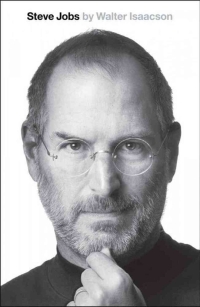 In his new book, simply titled Steve Jobs, renowned biographer Walter Isaacson explores the life of this iconic genius. Isaacson, a former executive at CNN and Time, is a phenomenal writer. His skill makes the 656-page book breezy and exciting. Also, his past biographies on Albert Einstein and Benjamin Franklin give him experience with other creative geniuses with whom to compare Jobs.
In his new book, simply titled Steve Jobs, renowned biographer Walter Isaacson explores the life of this iconic genius. Isaacson, a former executive at CNN and Time, is a phenomenal writer. His skill makes the 656-page book breezy and exciting. Also, his past biographies on Albert Einstein and Benjamin Franklin give him experience with other creative geniuses with whom to compare Jobs.
In this book, Isaacson reveals Jobs as arrogant, short-tempered, and likely neurotic. Jobs repeatedly bashes employees with streams of vulgarity, screaming, “What the **** is this?! This is a piece of s***!” His family mostly escaped his wrath, but almost everyone who knew him describes him as a jerk.
Yet what fueled Jobs’ hubris also shaped his genius. He was a perfectionist, through and through. Even to his death he micromanaged features on Apple’s new products and advertisements, afraid that anyone else would screw them up. He demanded that the interior circuit boards on his prized Mac be exquisitely designed and fabricated even though consumers would never see them. His perfectionism bordered on obsessive but as Isaacson shows, it was also responsible for Apple’s unrivaled success. Few other technology CEOs were as passionate or detailed as Jobs was and that’s what made Apple great.
Throughout the book I also appreciated its Catholic undertones. Jobs’ perfectionism is a model of the spiritual life. Like Jobs, the Church’s greatest saints were unsatisfied with even the smallest personal flew. They all embraced Jesus’ words: “Be perfect as your heavenly Father is perfect” (Mt 5:48). Jobs’ creativity also embodies God’s invitation to co-creat with him (Gn 1:28). God called us humans to “be fruitful and multiply,” to bring new beauty and life into a dark and disenchanted world. Jobs embraced this call even without even recognizing it. While the Apple-founder dabbled in many eastern religions, and never came close to embracing Catholicism, his life was full of Catholic touchpoints which emerge in the book.
Overall, when a remarkably gifted writer profiles such a beguiling figure like Jobs, the result is one of the most fascinating biographies of our day.
2. C.S. Lewis Books
In my continuing quest to read through C.S. Lewis’ entire body of work, chronologically, I knocked out another twelve titles this year, including the seven-book Chronicles of Narnia. Here are short reviews on each one:
Miracles
 This book is Lewis’ strongest answer to modern atheism, a belief system rooted in denial of the supernatural. Lewis doesn’t argue much for specific miracles like multiplying loaves and fishes, healing the blind, or rising from the dead. Instead, he focuses on the question of whether miracles are actually possible.
This book is Lewis’ strongest answer to modern atheism, a belief system rooted in denial of the supernatural. Lewis doesn’t argue much for specific miracles like multiplying loaves and fishes, healing the blind, or rising from the dead. Instead, he focuses on the question of whether miracles are actually possible.
One of his key insights, which is especially relevant today in a world where religion and science are depicted as enemies, is that miracles are not unscientific: they presuppose the existence of scientific laws. It’s only a miracle because it transcends the normal, natural workings of the world. Lewis also looks at probability theory to determine whether miracles are straight impossible or merely unlikely.
Miracles is one of Lewis’ headier books but it’s worth the read. I’d especially recommend it to atheists, skeptics, and naturalists.
That Hideous Strength
Lewis’ dystopian novel is my favorite of his Space Trilogy (also known as the Ransom Trilogy). It depicts the horrific consequences of worshiping science, technology, and the intellect above all else. In many ways, it embodies the arguments Lewis makes in The Abolition of Man. In a world where Scientism reigns supreme, the book’s prophetic warnings are desperately needed.
The Chronicles of Narnia
One paragraph can’t do justice to these seven wonder-ful books. They’re first and foremost, good stories. Familiar with hundreds of fairy tales and myths, Lewis knew how to weave a good tale. But more than that, the Chronicles “baptized my imagination”—they sanctified it. They bridged fantasy and Gospel to help encourage a new way of seeing the world, detecting wonder and the mysterious hand of God’s presence everywhere we look.
The great lion at the center of each tale, Aslan, is probably my favorite character in all of fiction. It’s through him we see the alluring, untamed, redemptive Jesus Christ more clearly than in any other non-Biblical text. It’s not too surprising that people continue to love these books today. Decades after their release, they still enchant children and edify adults.
The Great Divorce
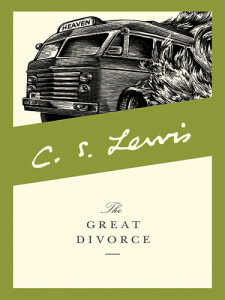 In this fictional story, Lewis examines Heaven and Hell as a busload of ghosts journey from Hell into a strange land, which is either the “outskirts of Heaven” or something like Purgatory. There, they are offered the chance to repent and enter the fullness of Heaven. Most ghosts come up with silly excuses for avoiding the change but the main character, only after meeting a ghost modeled after Lewis’ hero, George MacDonald, eventually submits to the Heavenly purification.
In this fictional story, Lewis examines Heaven and Hell as a busload of ghosts journey from Hell into a strange land, which is either the “outskirts of Heaven” or something like Purgatory. There, they are offered the chance to repent and enter the fullness of Heaven. Most ghosts come up with silly excuses for avoiding the change but the main character, only after meeting a ghost modeled after Lewis’ hero, George MacDonald, eventually submits to the Heavenly purification.
The book offers several major insights on Hell. One is that Hell is a closed door, locked from the inside. We choose Hell and God grants our wish. Another is that Hell is a tiny, insignificant place relative to the much larger grandeur of Heaven. In Lewis’ story, Hell fits into a minuscule crack in a heavenly road. Lewis’ depictions of Heaven, Hell, and Purgatory in this tale align surprisingly close with the Catholic view and his decision to use fiction to unpack those views make them all the better.
The Weight of Glory
This marvelous collection of essays on various subjects like pacifism, forgiveness, and cliques, is nice for its brevity: each can be easily read easily in one sitting. The collection gets its name from the featured piece, which Peter Kreeft describes as the greatest Christian sermon ever preached (I agree). I’m not a gifted at memorization, but many lines in that talk are so gripping, I can quote several of them even today—“It is a serious thing to live in a society of possible gods and goddesses” who will one day become either “immortal horrors or everlasting splendors.” By sampling so many different topics, Weight of Glory is a nice introduction to Lewis’ thought, especially his theological vision.
Till We Have Faces: A Myth Retold
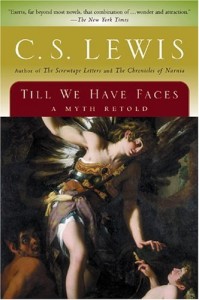 I wasn’t sure what to expect with this novel since the reviews I read were unusually mixed. Even among Lewis fans, some loved it, and many hated it, yet few were in the middle. However, I definitely fall in the first group. I found it beautiful and utterly captivating.
I wasn’t sure what to expect with this novel since the reviews I read were unusually mixed. Even among Lewis fans, some loved it, and many hated it, yet few were in the middle. However, I definitely fall in the first group. I found it beautiful and utterly captivating.
Till We Have Faces is Lewis’ re-telling of the Cupid and Psyche myth, but his version reads much more like the Biblical book of Job. The main character, Orual, experiences deep suffering and loss and her constant question is, “Why? Why have the gods allowed this to happen?” And as with Job, the answer she receives is unexpected, yet strangely satisfying. (After you read the book, be sure to download Peter Kreeft’s enlightening commentary which really illuminated the story for me.)
1. Treasure in Clay: The Autobiography of Fulton J. Sheen
Fulton Sheen
(Image, 1982)
Imagine that Justin Bieber and David Letterman each had prime-time television shows. Now imagine a Catholic priest preaching for an hour during the same timeslot, and attracting more viewers than both. That’s essentially what Venerable Fulton Sheen did back in the 1950’s. His “Life Is Worth Living” TV show aired opposite those of Frank Sinatra, the iconic singer and actor, and Milton Berle, widely known as “Mr. Television”. With magnetic preaching and charm, Sheen garnered more viewers than either celebrity and even won an Emmy Award for Most Outstanding Television Personality.
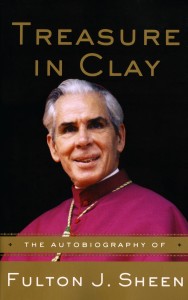 I’ve said before that Ven. Fulton Sheen was the twentieth-century’s greatest evangelist. He reached non-Catholics and inactive Catholics better than anyone I know. I also think he was the century’s most fascinating Catholic. Sheen was a key participant at Vatican II, author of more than sixty books, a masterful orator and preacher, and a global missionary. And that’s not mentioning his electronic outreach, for which he’s most famous, that drew over thirty million people each week.
I’ve said before that Ven. Fulton Sheen was the twentieth-century’s greatest evangelist. He reached non-Catholics and inactive Catholics better than anyone I know. I also think he was the century’s most fascinating Catholic. Sheen was a key participant at Vatican II, author of more than sixty books, a masterful orator and preacher, and a global missionary. And that’s not mentioning his electronic outreach, for which he’s most famous, that drew over thirty million people each week.
Back in September, I attended a special Mass of Thanksgiving in Sheen’s hometown, Peoria, IL, celebrating his recent venerability, and to prepare, I finally read his autobiography, Treasure In Clay. I had read several of his other books but his autobiography is now my favorite of the bunch.
Treasure in Clay is basically a book of stories. It’s packed with tales from Sheen’s childhood, his university years, and his 60-year priesthood. His absorbing storytelling provides behind the scenes glimpses at Vatican II, his many conversations with popes, reflections on his unwavering daily “holy hour”, and thoughts on his deep love for Our Lady, to whom he dedicated all his work.
Treasure in Clay also offers several stories from Sheen’s time as National Director of the Society of the Propagation of the Faith. The role put him in charge of the American Church’s international missionary activity and took him around the world. Throughout his time as Director he preached, ordained, served, and galvanized thousands of people in dozens of countries.
With such a diverse collection of stories, this book has something for everyone. If you want to become a better preacher, Sheen’s got several tips. If you’d like to deepen your spiritual life, he’s got suggestions there, too. And if you want to become a better evangelist, you can’t do better than Sheen.
As we roll forward into the New Evangelization, the Church has few better patrons than this singularly gifted New Evangelist. This year, read Treasure in Clay to learn from a priest, a teacher, a mystic, and a missionary who will, hopefully, also soon be recognized as a saint.
Honorable Mentions
- At the Heart of the Gospel: Reclaiming the Body for the New Evangelization (Image, 2012) by Christopher West
- Breaking Through: Catholic Women Speak for Themselves (Our Sunday Visitor, 2012) by Helen Alvare
- Catholic Teaching on Homosexuality: New Paths to Understanding (Ave Maria Press, 2012) by Fr. Lou Cameli
- The Catholics Next Door: Adventures in Imperfect Living (Servant Books, 2012) by Greg and Jennifer Willits
- Catholicism Pure and Simple (Stauffer Books, 2012) by Fr. Dwight Longenecker
- The Duty of Delight: The Diaries of Dorothy Day (Image, 2012) edited by Robert Ellsberg
- Holiness for Everyone: The Practical Spirituality of St. Josemaria Escriva (Our Sunday Visitor, 2012) by Eric Sammons
- Love in the Ruins (Dell Publishing, 1972) by Walker Percy
- The New Evangelization: Responding to the Challenge of Indifference (Gracewing Publishing, 2012) by Archbishop Rino Fisichella
- Platform: Get Noticed in a Noisy World (Thomas Nelson, 2012) by Michael Hyatt
NOTE: Check out books #15-#11 and #10-#6. You might also enjoy my favorite books from 2011 and 2010.
What were your favorite books of 2012?

